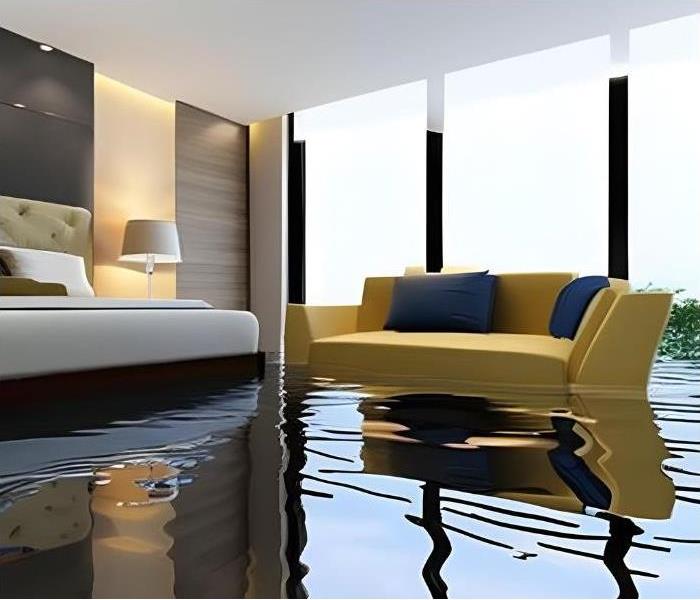Understanding the Water Damage Restoration Process: A Comprehensive Guide for Homeowners and Businesses
8/17/2023 (Permalink)
Water damage can be a devastating occurrence for both homeowners and businesses. The destructive power of water can result in significant losses and can potentially put the health of occupants at risk. In this comprehensive guide, we’ll break down the entire water damage restoration process, from initial assessment through to complete restoration.
Recognizing Water Damage and Its Causes
Water damage can occur for a myriad of reasons – everything from natural disasters like floods and storms to household issues such as leaks and pipe bursts. It's essential to identify the signs of water damage early, such as dampness, unusual stains, a musty smell, or mold growth, to prevent further deterioration of your property.
The Importance of Quick Emergency Response
The immediate aftermath of discovering water damage is critical. A swift emergency response can prevent additional damage and potential mold growth. Professional restoration services typically offer 24/7 emergency water removal and can quickly extract the water and start the drying process.
Understanding the Comprehensive Water Damage Restoration Process
The water damage restoration process is a multi-step procedure involving:
Initial Assessment
Certified water damage specialists will conduct a thorough inspection to assess the severity of the damage.
Water Extraction
High-powered equipment is used for water extraction and removal of any standing water.
Dehumidification and Drying: Professional-grade dehumidifiers and air movers are utilized to dry out the affected area and control the moisture level.
Cleaning and Sanitizing
The area is then cleaned and sanitized to remove any bacteria or mold that may have begun to form.
Restoration
The final step involves repairing and restoring the property to its pre-damage state. This could involve minor repairs like replacing drywall or more extensive restorations like rebuilding entire rooms.
Key Tools and Equipment Used in Water Damage Restoration
The restoration process requires a variety of advanced equipment. This includes water extractors, air movers, dehumidifiers, infrared cameras for detecting hidden water damage, and hygrometers to measure moisture levels.
Confronting Mold and Mildew After Water Damage
One of the most significant risks following water damage is the growth of mold and mildew, which can have severe health implications. Professionals in water damage restoration are also experts in mold remediation, ensuring your environment is safe and healthy.
Navigating Insurance Claims for Water Damage
Understanding your insurance coverage for water damage can be tricky. Depending on the source of the water damage, certain damages may or may not be covered. We provide guidance on handling insurance claims, working with adjusters, and how to get the coverage you deserve.
Tips to Prevent Future Water Damage
Preventing water damage is always better than having to repair it. Regular maintenance, property inspections, and quick action when spotting potential issues are crucial. This section offers practical tips and preventive measures to avoid future incidents of water damage.
Choosing a Professional Water Damage Restoration Service
Choosing the right professional restoration company can make a world of difference. Look for certified specialists with proven experience, positive reviews, and transparent quotes. They should be able to handle all aspects of water damage, from water extraction to complete restoration.
Health Implications of Untreated Water Damage
If left untreated, water damage can lead to health problems due to mold exposure and poor indoor air quality. Respiratory issues, allergies, and other health conditions can arise. Prompt action and professional remediation are key to maintaining a healthy environment.
Latest Advances in Water Damage Restoration Technology
Stay informed about the latest advances in technology and methodologies used in the water damage restoration field. Innovations are constantly emerging to make the process more efficient and effective, ensuring the best possible outcome for your property.
Conclusion
Water damage restoration is a complex process best left to professionals. Whether you're dealing with damage from a minor leak or a major flood, this guide should help you understand what to expect and how to navigate the process.






 24/7 Emergency Service
24/7 Emergency Service
